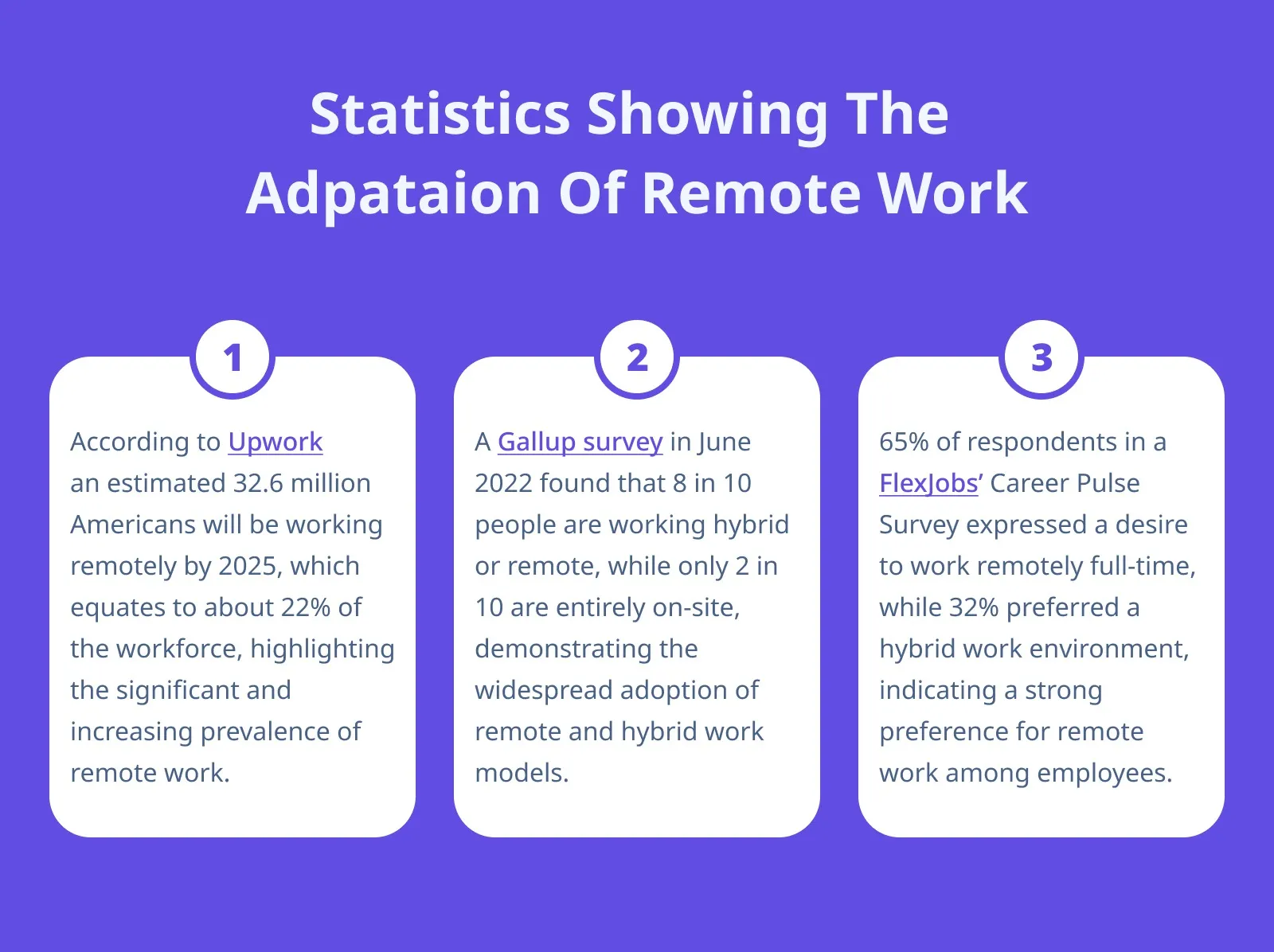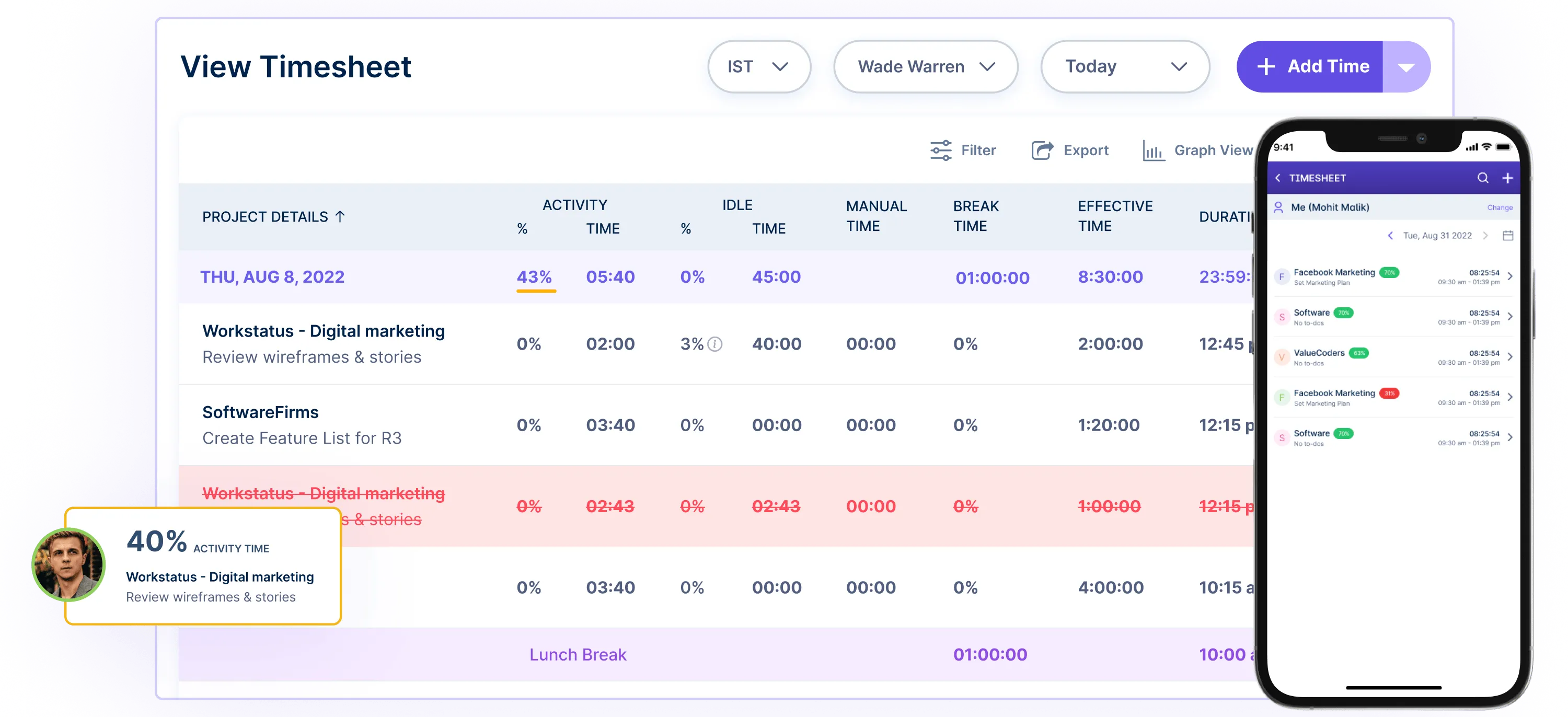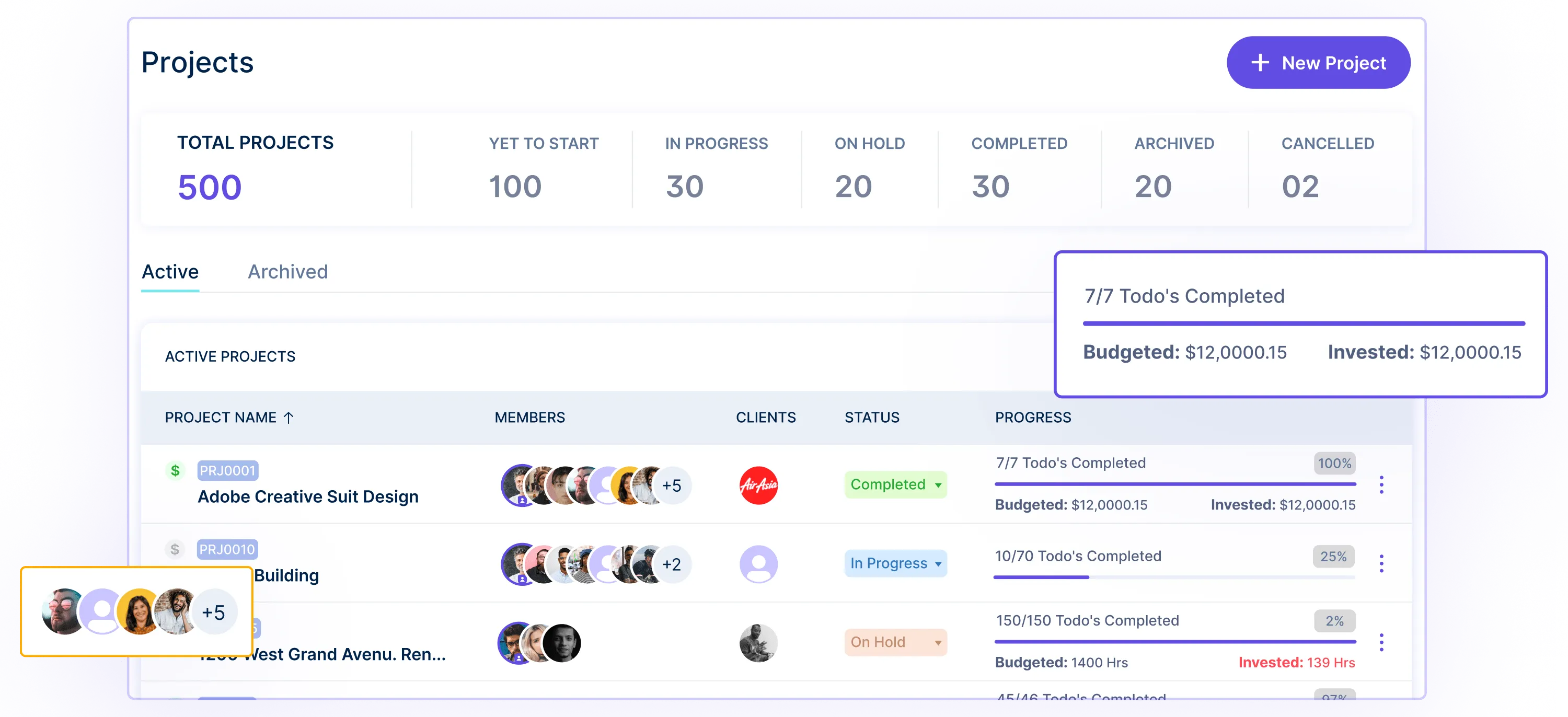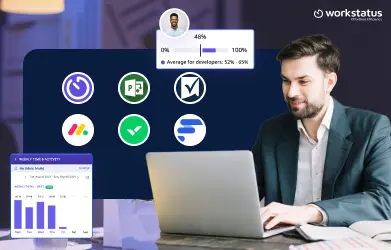Table of Contents
Introduction
How can HR managers navigate the complex landscape of remote work and harness its full potential for organizational success?
As the workforce continues to embrace flexible arrangements, the role of HR in ensuring optimal efficiency has never been more crucial.
This blog is written to answer this question by offering targeted insights, incorporating pertinent statistics, and providing practical strategies.
Being an HR, you need to join us on a journey to enhance your ability to manage remote teams, foster collaboration, and elevate the overall productivity of your organization in the dynamic realm of virtual work.

Remote HR Success: Quick Tips
1. Precision Timekeeping Techniques
Challenge:
Navigating the intricacies of remote work poses a unique challenge for HR managers in accurately tracking the diverse work hours of virtual teams. While addressing these challenges, HR professionals can explore their earning potential through resources like this salary guide.
Traditional methods may struggle to capture the nuanced collaboration patterns in remote settings, potentially leading to payroll discrepancies and compliance concerns.
Solution: Opting for Timekeeping in Remote Management

Adopting advanced online timesheets and time-tracking tools in remote work management emerges as a strategic move for HR managers. Here’s why it’s a game-changer:
- Accurate Records: Online timesheets provide real-time tracking, ensuring precise records crucial for seamless payroll processing in virtual work environments.
- Productivity Insights: Unlock valuable insights into individual and team productivity, empowering HR managers to identify remote work trends and tailor strategies for enhanced efficiency.
- Legal Compliance: With automated time tracking, stay confidently compliant with labor laws specific to remote work, mitigating the risk of compliance issues stemming from dispersed teams.
2. Attendance Precision with Facial Recognition
Challenge:
Maintaining precise attendance records becomes paramount in the remote work, given the absence of physical presence. Traditional attendance methods fail to ensure the security and authenticity of attendance data in a virtual environment.
Solution: Incorporating Virtual Attendance

For HR managers navigating the complexities of remote team management, integrating facial recognition technology becomes a strategic solution for attendance precision. Here’s why it works seamlessly:
- Biometric Validation: Ensure attendance records are securely linked to the right individuals, bolstered by the added layer of security provided by facial recognition.
- Mitigating Time Fraud: Drastically reduce the risk of time fraud, fostering a culture of accountability and trust within dispersed teams collaborating virtually.
- Enhanced Security: Selfie validation elevates the overall security of attendance data, preventing unauthorized access and maintaining a secure remote work environment.
3. Streamlined Shift Management
Challenge:
Remote work introduces a challenge for HR managers in effectively managing and optimizing team schedules.
Balancing workloads across different time zones and ensuring cohesive collaboration can be complex without a streamlined shift management strategy.
Solution: Strategic Shift Planning For Remote Teams

In remote work management, HR professionals can leverage strategic shift planning to optimize team schedules. Here’s how it aids in overcoming the challenge:
- Efficient Collaboration: Streamline collaboration by strategically aligning remote team schedules, ensuring overlapping work hours for effective communication and project continuity.
- Global Time Zone Adaptation: Address the challenge of diverse time zones by implementing shift management strategies that consider and accommodate the unique working hours of international remote teams.
- Balanced Workloads: Achieve workload balance through thoughtful shift planning, preventing burnout, and ensuring equitable distribution of tasks among remote employees.
4. Empowering Productivity
Challenge:
Ensuring productivity and maintaining a connected workforce in a remote setting can be challenging for HR managers.
Without the ability to physically observe work habits, tracking employee engagement and preventing potential burnout becomes a priority.
Solution: Monitoring Productivity Virtually

Integrating employee monitoring tools, including app and URL tracking and screenshot capture, is essential for HR managers overseeing remote work. Here’s how it addresses the specific challenges:
- Insightful Productivity Analysis: Gain real-time insights into remote employee productivity through app and URL tracking, enabling HR managers to identify trends and areas for improvement.
- Preventing Burnout: Use employee monitoring tools to proactively identify signs of burnout by analyzing work habits and intervening with targeted support measures.
- Ensuring Accountability: Screenshot capture adds a layer of accountability, fostering a culture of transparency and trust in remote work environments.
5. Workforce Optimization
Challenge:
Optimizing a remote workforce presents HR managers with the challenge of aligning team skills with project requirements, especially when physical proximity is absent. Identifying and addressing skill gaps in a dispersed team is crucial for sustained productivity.
Solution: Strategic Workforce Optimization for Remote Teams

In remote work management, HR professionals can effectively deploy a workforce optimization blueprint to navigate this challenge. Here’s how it contributes to achieving optimal team performance:
- Skill Alignment: Strategically align team skills with project demands, ensuring remote employees are assigned tasks that capitalize on their expertise, fostering efficiency and project success.
- Resource Allocation Excellence: Leverage workforce optimization tools to allocate resources efficiently, preventing bottlenecks and ensuring that projects progress seamlessly without physical proximity.
- Addressing Skill Gaps: Proactively identify and address skill gaps within the remote workforce, providing targeted training and development opportunities to enhance team capabilities.
Read more – Workforce Optimization Software: 2024 Trends
6. Combatting Employee Burnout Proactively
Challenge:
In a remote work environment, HR managers face the unique challenge of identifying and mitigating employee burnout without the ability to observe work habits physically.
Recognizing signs of burnout in a dispersed team is essential for maintaining a healthy and engaged workforce.
Solution: Including Proactive Strategies for Employee Well-being

Implementing proactive strategies to combat employee burnout is paramount for HR managers focusing on remote work management. Here’s how it contributes to a resilient and well-balanced remote workforce:
- Early Recognition: Utilize remote-friendly methods to identify signs of burnout, such as changes in work habits and performance, allowing HR managers to intervene early and offer tailored support.
- Customized Well-being Initiatives: Implement targeted well-being initiatives based on the unique challenges of remote work, ensuring that employees feel supported and valued in their virtual work environment.
Work-Life Balance Advocacy: Foster a culture that prioritizes work-life balance through HR initiatives, promoting employee well-being and preventing burnout before it becomes a significant concern.
7. Embrace Positive Work Habits
Challenge:
In the remote work scenario, HR managers face the challenge of cultivating positive work habits among employees without the physical presence to reinforce a structured work environment.
Recognizing and encouraging these habits remotely is crucial for long-term well-being.
Solution: Promoting Well-Being In a Remote Environment

In remote work management, HR professionals can leverage habit tracker apps explicitly designed for work-related habits. Here’s how it contributes to fostering a positive and productive remote work culture:
- Positive Habit Cultivation: Implement habit tracker apps to encourage the development of positive work habits, such as regular breaks, goal-setting, and effective time management.
- Employee Well-being: Promote the well-being of remote employees by focusing on habits that contribute to a healthy work-life balance, reducing stress, and preventing burnout.
- Supportive Environment: Establish a supportive remote work environment using habit tracker apps to track and celebrate achievements, fostering a positive and motivated workforce.
8. Overtime Management and Fair Compensation
Challenge:
Remote work introduces challenges in monitoring overtime and ensuring fair compensation, which can be complex for HR managers.
The absence of physical cues and the fluid nature of remote schedules necessitate a focused strategy to manage overtime effectively.
Solution: Remote Overtime Tracker Implementation

The implementation of a dedicated overtime tracker becomes essential. Here’s how it addresses the specific challenges associated with overtime in virtual teams:
- Monitoring Remote Overtime: Utilize remote overtime tracking tools to monitor and manage overtime hours effectively, ensuring compliance with labor laws and fair compensation for remote employees.
- Transparent Compensation: Enhance transparency in compensation by using an overtime tracker to communicate the criteria and rates for overtime work in a remote setting.
- Balanced Workload: Promote a balanced workload by actively managing and limiting excessive overtime, preventing burnout, and maintaining employee well-being in the remote work environment.
9. Workload Harmony For Optimal Performance
Challenge:
Balancing workloads for optimal performance is a critical aspect of remote work management for HR professionals. The absence of physical proximity makes it challenging to gauge workloads accurately and ensure equitable distribution of tasks.
Solution: Strategic Workload Management For Remote Teams
HR managers can employ strategic workload management techniques to address workload imbalances. Here’s how it contributes to optimal team performance:
- Balanced Work Distribution: Implement strategic workload management to ensure a fair and equitable distribution of tasks among remote team members, preventing burnout and enhancing overall well-being.
- Performance Optimization: Analyze workload data to identify trends and areas for improvement, optimizing team performance and efficiency in a virtual setting.
- Utilizing Workstatus Features: Leverage features such as Workstatus to gain insights into workload distribution, enabling HR managers to make data-driven decisions that contribute to optimal team performance.
10. Agile Workflows for Adaptive Project Management
Challenge:
Remote work introduces the challenge of adapting to changing priorities and timelines. HR managers need strategies that promote flexibility and responsiveness in project management to navigate the dynamic nature of remote workflows.
Solution: Implementing Agile Workflows in Remote Projects
Implementing agile methodologies becomes crucial for HR managers engaged in remote work management. Here’s how it contributes to adaptive project management in virtual teams:
- Flexibility in Project Execution: Embrace agile workflows to promote flexibility and adaptability, allowing remote teams to respond effectively to changing priorities and timelines.
- Collaborative Decision-Making: Foster collaborative decision-making by implementing agile practices encouraging constant communication and alignment within remote project teams.
- Enhanced Responsiveness: Improve responsiveness to client needs and market changes by incorporating agile methodologies, ensuring remote projects remain dynamic and successful.
Integrating Workstatus features emerges as the cornerstone for HR managers seeking a comprehensive solution in elevating remote work efficiency.
From precise timekeeping to employee well-being, Workstatus provides a robust platform tailored to the unique challenges of remote work management, empowering HR professionals to navigate this dynamic landscape with precision and confidence.
Conclusion:
The strategies outlined above, enriched by the integration of Workstatus, serve as a roadmap for HR managers aiming to maximize remote work efficiency.
From strategic timekeeping to fostering positive work habits and agile project management, these tips cater to the specific needs of a dispersed workforce.
As the workforce continues to evolve, embracing these strategies, alongside the intuitive features offered by Workstatus, ensures that HR managers play a pivotal role in shaping a resilient, efficient, and thriving remote work environment.












